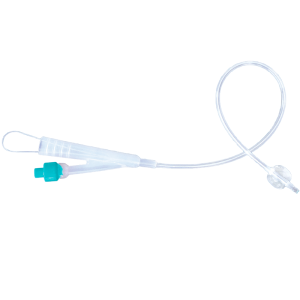The main differences between HC (Hydrophilic Coated) and NC (Non-Coated) catheters pertain to their construction and usability, which can affect patient comfort and ease of use:
- Coating:
HC Catheters (Hydrophilic Coated): These catheters have a special coating that becomes lubricated when it comes into contact with water or saline. This coating reduces friction during insertion and withdrawal, making the process smoother and more comfortable for the patient.
NC Catheters (Non-Coated): These do not have any lubricating coating, which means they rely solely on the technique of the user and any additional lubrication used (if any) to minimize friction.
- Comfort:
HC Catheters: Generally more comfortable for patients due to the hydrophilic coating that minimizes irritation and trauma to the urethra.
NC Catheters: May lead to increased discomfort during insertion and removal since they do not have the added lubrication from a coating.
- Ease of Insertion:
HC Catheters: The lubricated surface makes them easier to insert and reduces the risk of urethral injury, which is especially important for patients requiring frequent catheterizations.
NC Catheters: May require careful handling and additional lubrication to facilitate smooth insertion, particularly in sensitive or hospital settings.
- Additional Considerations:
Hydration and Activation: HC catheters need to be activated with water or saline before use, which requires some pre-usage preparation.
Infection Risk: Both types can pose a risk of urinary tract infections (UTIs), but HC catheters may be somewhat less traumatic to the urethra, potentially reducing UTI risk in some patients.
- Duration of Use:
Both HC and NC catheters can be used for intermittent catheterization, but HC catheters may be preferred for long-term or frequent use due to their comfort and reduced friction.
Conclusion:
The choice between HC and NC catheters often depends on the specific clinical situation, patient needs, and the preference of the healthcare provider. HC catheters are typically favored for their ease of use and comfort, particularly in settings that require frequent catheterizations.



